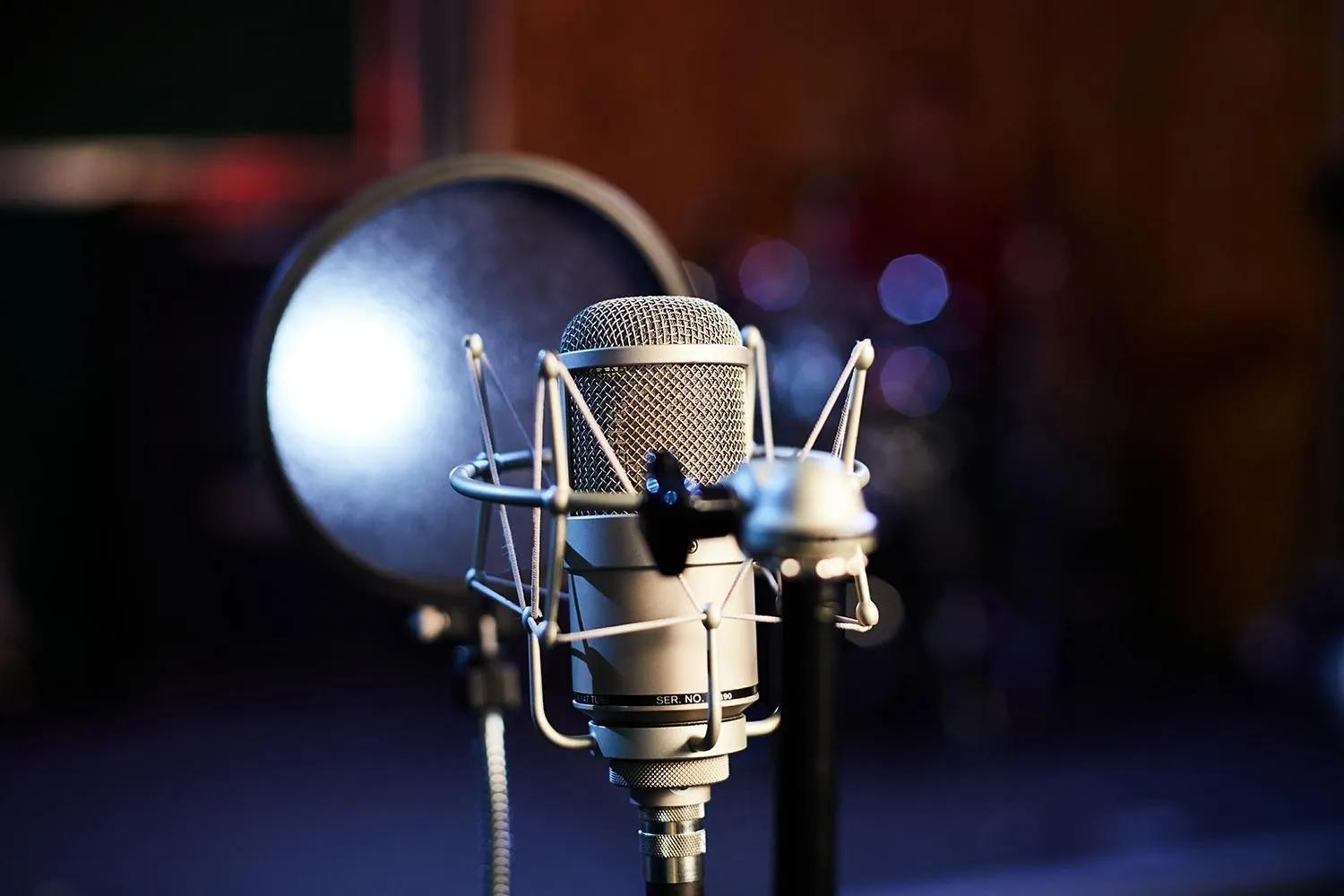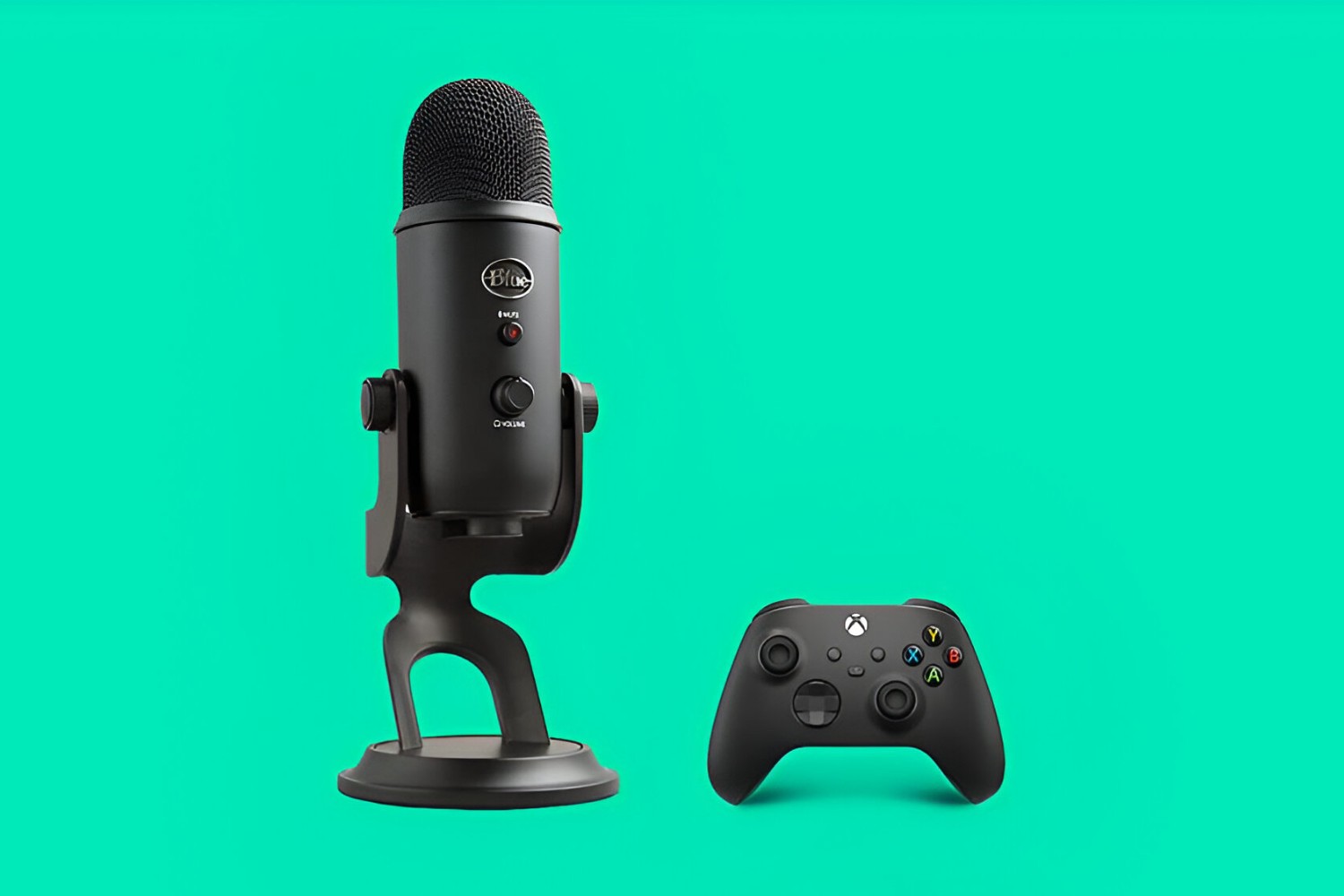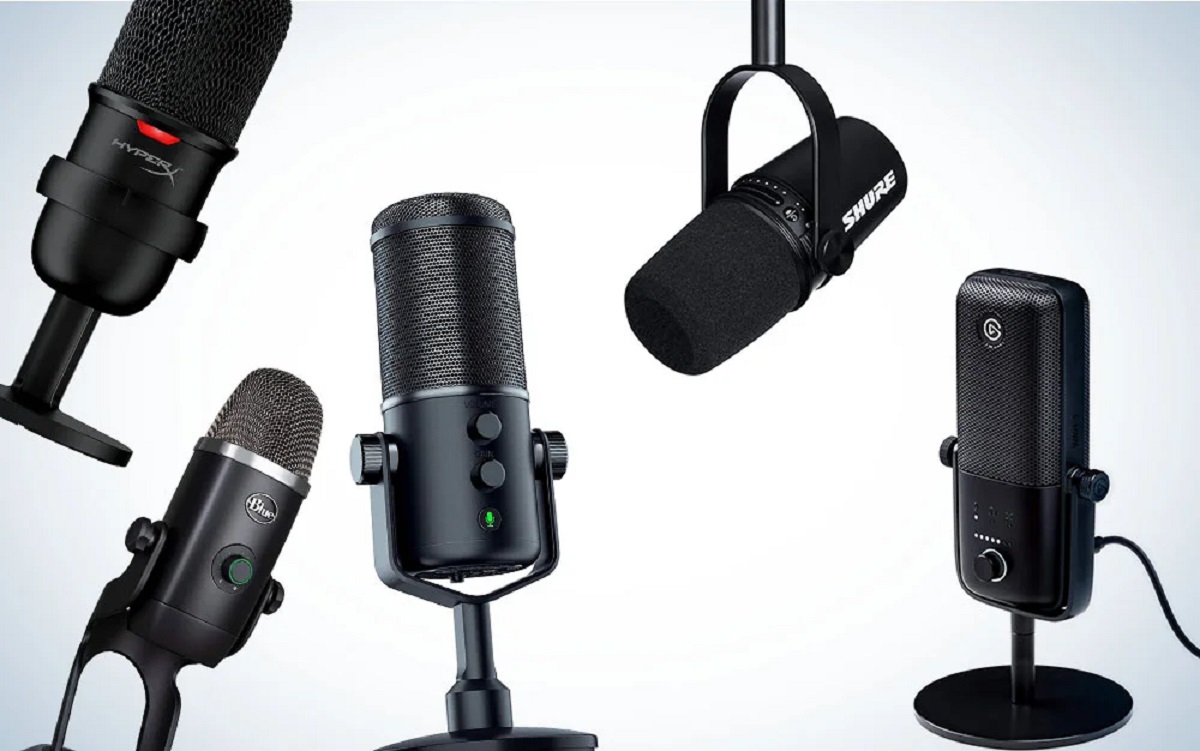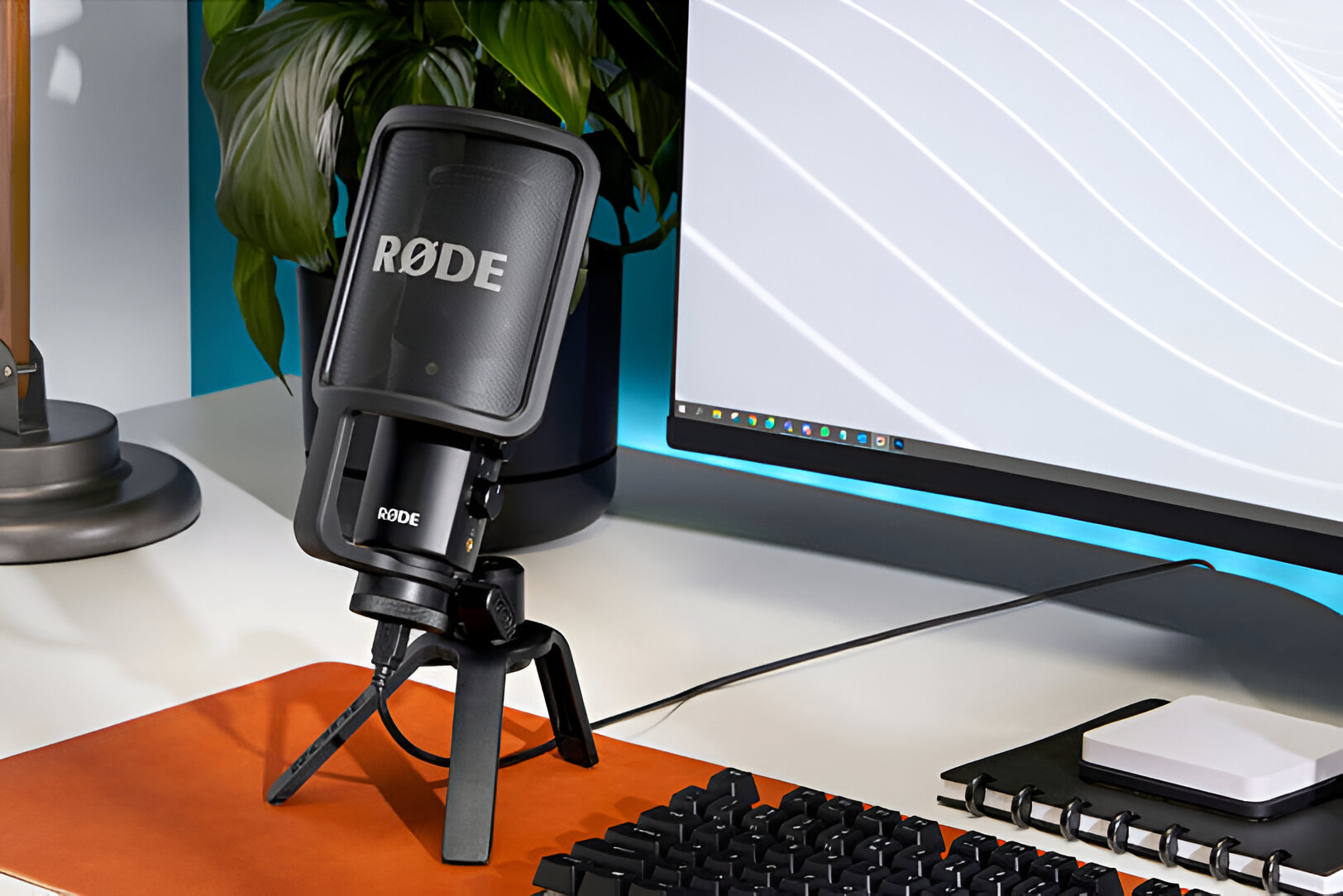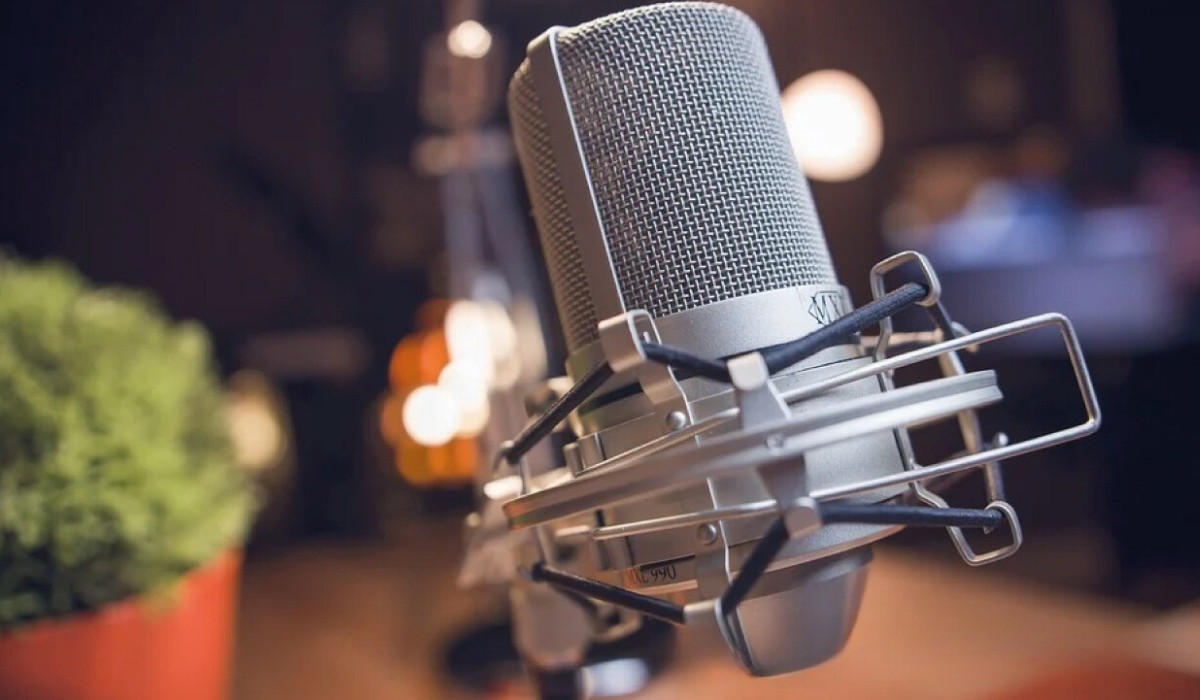Introduction
So, you're looking to enhance your voice and take your recordings to the next level? Well, you've come to the right place! Whether you're a podcaster, musician, voiceover artist, or content creator, the quality of your voice can make a significant impact on your work. One of the most effective tools for achieving professional-grade vocal recordings is a condenser microphone. In this comprehensive guide, we'll delve into the world of condenser microphones and explore how you can use them to elevate the quality of your voice recordings.
Condenser microphones are renowned for their exceptional sensitivity and ability to capture subtle nuances in vocal performances. Unlike dynamic microphones, which are commonly used for live performances, condenser microphones are ideal for studio recording due to their superior frequency response and transient accuracy. By harnessing the power of a condenser microphone, you can unlock the full potential of your voice, bringing out its richness, clarity, and expressiveness.
Throughout this guide, we'll cover everything from understanding the mechanics of condenser microphones to selecting the right one for your voice, setting it up for optimal performance, and employing techniques to enhance your vocal recordings. Additionally, we'll provide valuable tips for maintaining your condenser microphone to ensure its longevity and consistent performance.
With the knowledge and insights gained from this guide, you'll be well-equipped to harness the capabilities of a condenser microphone and infuse your voice with a new level of professionalism and artistry. So, let's embark on this journey to unlock the full potential of your voice and create captivating recordings that leave a lasting impression.
Understanding Condenser Microphones
Before delving into the specifics of condenser microphones, it’s essential to grasp the fundamental principles that set them apart from other types of microphones. Unlike dynamic microphones, which utilize electromagnetic induction to generate an electrical signal, condenser microphones operate on the basis of capacitance variation.
At the core of a condenser microphone lies a diaphragm, typically made of a thin conductive material, positioned in close proximity to a backplate. This arrangement forms a capacitor, where the diaphragm serves as one plate and the backplate as the other. When sound waves reach the diaphragm, it vibrates in response, causing the distance between the diaphragm and the backplate to fluctuate. These variations in distance result in changes in capacitance, thereby generating an electrical signal proportional to the sound waves.
One of the defining characteristics of condenser microphones is their sensitivity to high frequencies and transient details. This sensitivity allows condenser microphones to capture the nuances and intricacies of vocal performances with exceptional clarity and fidelity. Additionally, condenser microphones typically exhibit a wider frequency response compared to dynamic microphones, enabling them to faithfully reproduce the entire spectrum of human voice and musical instruments.
It’s important to note that condenser microphones require a power source to polarize the diaphragm and backplate, a function typically fulfilled by phantom power from an audio interface or mixer. Some condenser microphones feature internal batteries or dedicated power supplies to achieve this polarization.
Furthermore, condenser microphones can be categorized into two main types: large diaphragm and small diaphragm. Large diaphragm condenser microphones are prized for their warmth and depth, making them well-suited for vocals and solo instruments. On the other hand, small diaphragm condenser microphones excel in capturing intricate details and are often preferred for acoustic instruments, ensemble recordings, and ambient sound capture.
By understanding the underlying principles and unique characteristics of condenser microphones, you can appreciate their capacity to elevate vocal recordings and bring out the subtleties and nuances that define your voice.
Choosing the Right Condenser Microphone for Your Voice
When it comes to selecting a condenser microphone that complements your voice, several factors come into play, each influencing the overall sound and character of the recordings. The first consideration is the diaphragm size, as it significantly impacts the microphone’s frequency response and tonal characteristics. Large diaphragm condenser microphones are revered for their ability to imbue vocals with warmth and depth, making them an excellent choice for intimate and emotive performances. Conversely, small diaphragm condenser microphones excel in capturing intricate details and are well-suited for crisp and articulate vocal renditions.
Another crucial aspect to consider is the microphone’s polar pattern, which determines its sensitivity to sound from different directions. For vocal recordings, a cardioid polar pattern is commonly preferred, as it focuses on capturing sound from the front while minimizing ambient noise and off-axis sound. This directional characteristic is particularly beneficial for isolating the voice and achieving clear and pristine vocal tracks.
Additionally, the microphone’s frequency response plays a pivotal role in shaping the tonal balance of your voice recordings. While some condenser microphones exhibit a flat and neutral frequency response, others are tailored to emphasize certain frequency ranges, imparting a distinct sonic character to the recordings. Understanding the tonal profile of your voice and the desired sonic qualities can guide you in selecting a condenser microphone with a frequency response that enhances the richness and clarity of your vocals.
It’s also essential to consider the microphone’s transient response, which dictates its ability to faithfully capture rapid changes in vocal dynamics and articulation. A condenser microphone with a fast and accurate transient response can preserve the nuances and expressiveness of your voice, ensuring that subtle inflections and emotive phrasing are faithfully reproduced in the recordings.
Furthermore, practical considerations such as the microphone’s build quality, shock-mount compatibility, and connectivity options should not be overlooked. Assessing the microphone’s durability, its compatibility with shock mounts for vibration isolation, and its connectivity with audio interfaces or preamps can streamline the setup process and contribute to a seamless recording experience.
By carefully evaluating these factors and considering how they align with the unique qualities of your voice, you can make an informed decision when choosing a condenser microphone that elevates your vocal recordings to new heights.
Setting Up Your Condenser Microphone
Properly setting up your condenser microphone is crucial to maximizing its performance and capturing the full range of your voice with clarity and precision. The first step in the setup process is to ensure that your recording environment is conducive to producing high-quality vocal recordings. Choose a quiet space with minimal background noise and, if possible, incorporate acoustic treatment to minimize reflections and reverberations.
Before connecting your condenser microphone, it’s important to engage phantom power if your microphone requires it. Most audio interfaces and mixers provide phantom power, typically selectable in increments of 12V, 24V, 48V, or higher. Activate the appropriate phantom power voltage based on the specifications of your condenser microphone to polarize its internal components and enable it to capture sound effectively.
When positioning the condenser microphone, consider the optimal distance and angle for capturing your voice. A general rule of thumb is to position the microphone approximately 6 to 12 inches away from your mouth, ensuring that you maintain a consistent distance to facilitate a balanced frequency response and minimize plosives and sibilance. Experiment with the microphone’s orientation to find the sweet spot that accentuates the tonal qualities of your voice while mitigating unwanted artifacts.
Utilizing a pop filter can further enhance the setup by attenuating plosive sounds and reducing the impact of breath noise on the microphone. By strategically placing the pop filter between the microphone and your mouth, you can mitigate the effects of strong plosives such as “p” and “b” sounds, resulting in cleaner and more intelligible vocal recordings.
Once the microphone is positioned to your satisfaction, take the time to adjust the microphone preamp or input gain on your audio interface to achieve an optimal signal level without introducing distortion or excessive noise. Monitoring the input levels and making subtle adjustments ensures that your vocal recordings maintain a healthy signal-to-noise ratio and avoid clipping, preserving the integrity of your performances.
Finally, conduct a thorough sound check to assess the microphone’s performance and make any necessary refinements to the setup. Record brief vocal samples and evaluate the tonal balance, clarity, and overall fidelity of the recordings, making adjustments as needed to achieve the desired sonic characteristics.
By meticulously setting up your condenser microphone and fine-tuning its placement and parameters, you can create an environment that empowers your voice to shine through with unparalleled clarity and expression.
Techniques for Enhancing Your Voice with a Condenser Microphone
Harnessing the full potential of a condenser microphone involves employing techniques that accentuate the nuances and emotive qualities of your voice, elevating your vocal recordings to a professional standard. Understanding these techniques and integrating them into your recording process can significantly enhance the impact and authenticity of your vocal performances.
One fundamental technique is mic positioning, which directly influences the tonal character and presence of your voice in the recordings. Experiment with subtle variations in microphone placement to discover the optimal position that complements the unique qualities of your voice. A slightly off-center placement can introduce a sense of intimacy and warmth, while a more direct alignment can emphasize clarity and articulation.
Utilizing proximity effect, a phenomenon where the bass frequencies are accentuated as the microphone gets closer to the sound source, can be an effective technique for adding depth and richness to your voice. By adjusting your proximity to the microphone based on the desired tonal qualities, you can imbue your vocal performances with a captivating and dynamic presence.
Furthermore, exploring the use of dynamic range and expressive tonal variations can infuse your vocal recordings with depth and emotion. Leveraging the microphone’s sensitivity to capture subtle shifts in volume and timbre allows you to convey the full spectrum of emotions in your performances, from delicate whispers to powerful crescendos, creating a captivating and immersive listening experience.
Employing proper breath control and microphone technique is essential for achieving clean and articulate vocal recordings. By modulating your breathing and employing consistent microphone technique, you can minimize unwanted breath noise and ensure that your vocal delivery remains focused and engaging. Additionally, maintaining an appropriate distance from the microphone while enunciating clearly contributes to a polished and professional vocal performance.
Posture and body positioning play a crucial role in vocal recordings, influencing the projection and resonance of your voice. Maintaining good posture and vocal alignment while recording can enhance the tonal clarity and projection of your voice, allowing for a more commanding and authoritative vocal delivery.
Finally, embracing the expressive potential of your voice and allowing your emotions to resonate through your performances can breathe life and authenticity into your recordings. Infusing genuine emotion and sincerity into your vocal delivery creates a profound connection with the listener, fostering an immersive and impactful listening experience.
By integrating these techniques into your recording process and adapting them to suit the unique qualities of your voice, you can harness the capabilities of a condenser microphone to elevate your vocal recordings with depth, emotion, and authenticity.
Tips for Maintaining Your Condenser Microphone
Ensuring the longevity and optimal performance of your condenser microphone involves proactive care and maintenance practices that preserve its functionality and sonic capabilities. By implementing these tips, you can safeguard your investment and continue to capture pristine and compelling vocal recordings.
First and foremost, it’s essential to protect your condenser microphone from environmental factors that can compromise its sensitive components. Store the microphone in a dedicated case or pouch when not in use to shield it from dust, moisture, and physical damage. Additionally, consider investing in a microphone cover or windscreen to safeguard the diaphragm from airborne particles and moisture during recording sessions.
Regularly inspect and clean the microphone’s exterior and grille to remove any accumulated debris or contaminants that may affect its sonic performance. Use a soft brush or microfiber cloth to gently remove dust and dirt, taking care not to apply excessive pressure that could damage the delicate components.
When handling the microphone, exercise caution to prevent accidental drops or impacts that can compromise its internal circuitry and mechanical components. Secure the microphone on a stable stand or shock mount to minimize the risk of physical damage during recording sessions or handling.
Furthermore, be mindful of the microphone’s exposure to extreme temperatures and humidity, as these environmental conditions can impact its performance and longevity. Avoid subjecting the microphone to rapid temperature fluctuations and high humidity levels, and store it in a controlled environment to maintain its stability and reliability.
Regularly inspect the microphone’s cable and connectors for signs of wear or damage, as faulty connections can introduce noise and signal degradation. If any issues are detected, promptly replace the cable or connectors to ensure consistent and reliable connectivity.
When transporting the microphone for live performances or recording sessions outside of your studio, use a durable carrying case or padded bag to shield it from potential jolts and vibrations during transit. Secure the microphone in a protective enclosure to minimize the risk of damage from accidental impacts or rough handling.
Lastly, adhere to the manufacturer’s recommended maintenance guidelines and servicing intervals to uphold the microphone’s performance and address any potential issues in a timely manner. Routine professional servicing and inspection can identify and rectify any underlying issues, preserving the microphone’s sonic integrity and reliability over time.
By implementing these maintenance tips and prioritizing the care and protection of your condenser microphone, you can uphold its performance, extend its lifespan, and continue to produce exceptional vocal recordings that captivate and inspire.







